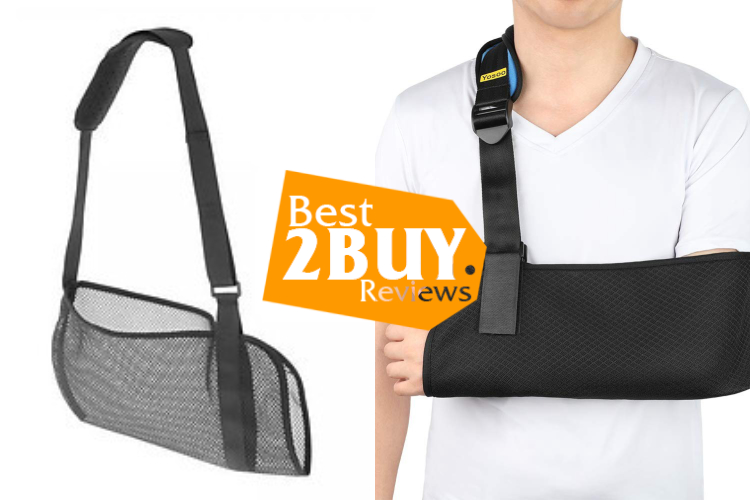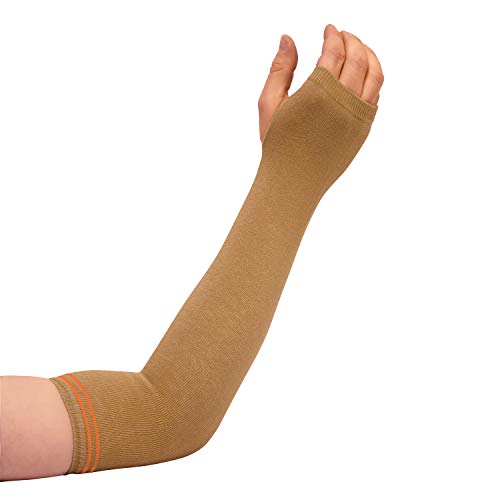Arm supports, also known as arm slings or arm braces, are medical devices designed to immobilize and support the arm or shoulder after an injury or surgery. They are commonly used to provide stability and promote healing in cases of fractures, sprains, dislocations, or post-operative recovery.
Arm supports are typically made of lightweight, breathable materials such as fabric or foam, and they come in various designs and configurations depending on the specific needs of the injury. The main purpose of an arm support is to restrict movement in the affected arm, allowing the injured tissues or bones to heal properly by reducing stress and strain.

Common Types of Arm Supports
Here are some common types of arm supports:
Shoulder immobilizers
These arm supports wrap around the shoulder and hold the arm close to the body. They are commonly used for shoulder injuries, such as dislocations or rotator cuff tears, to restrict movement and provide stability.
Sling and swathe
This type of arm support consists of a sling that supports the forearm and a wide strap (swathe) that wraps around the chest and holds the arm close to the body. Sling and swathe supports are commonly used for fractures or sprains of the arm or shoulder.
Velpeau sling
This arm support immobilizes the arm and shoulder by holding the forearm across the chest. It is often used for fractures or dislocations of the collarbone or upper arm.
Elbow immobilizers
Elbow immobilizers are arm supports that restrict movement at the elbow joint. They are commonly used for fractures or sprains of the elbow or after elbow surgery.
Wrist and hand splints
While not specifically arm supports, wrist and hand splints are often used in conjunction with arm supports to provide additional stability. They immobilize the wrist and hand, allowing healing of wrist fractures, sprains, or tendon injuries.
It's important to consult with a healthcare professional, such as a doctor or physical therapist, to determine the most appropriate type of arm support for your specific injury or condition. They can provide guidance on proper usage, fit, and duration of use to ensure optimal healing and recovery.
Avantages of arm supports
There are several reasons why you may want to consider buying an arm support:
Immobilization and support
Arm supports are designed to immobilize and support the arm, shoulder, or elbow after an injury or surgery. They help restrict movement in the affected area, which is essential for proper healing of fractures, sprains, dislocations, or other injuries. By providing stability and support, arm supports can help prevent further damage and promote recovery.
Pain relief
Arm supports can help alleviate pain associated with arm injuries. By limiting movement and providing support to the injured area, arm supports reduce stress and strain on the muscles, tendons, and bones, thereby reducing pain and discomfort. They can also help in reducing swelling and inflammation.
Protection and prevention of re-injury
Wearing an arm support can help protect the injured arm from accidental bumps, knocks, or excessive movement. It acts as a physical barrier, shielding the injured area from further harm. Additionally, arm supports can help prevent re-injury during daily activities or sports by providing additional support and stability to the weakened or healing tissues.
Facilitating healing and recovery
By immobilizing the arm or shoulder, arm supports create an optimal environment for healing. They allow the injured tissues or bones to rest and recover without undue stress. Arm supports can help promote proper alignment of the injured structures, reduce swelling, and enhance blood circulation, all of which contribute to a faster and more efficient healing process.
Rehabilitation and post-operative recovery
Arm supports are often used as part of the rehabilitation process after surgery or other medical interventions. They assist in maintaining the surgical site or injured area in the appropriate position, protecting the surgical repair, and supporting the recovery process. Arm supports can be gradually adjusted or modified as rehabilitation progresses, allowing for controlled movement and strengthening exercises.
Increased comfort and confidence
Arm supports can provide a sense of comfort and security during the healing process. They can help alleviate anxiety or fear associated with movement or re-injury. By providing support and stability, arm supports can boost confidence and allow individuals to engage in daily activities with less pain and worry.
It's important to note that the decision to buy an arm support should be based on the recommendation and guidance of a healthcare professional. They can evaluate your specific injury or condition and determine if an arm support is appropriate for your needs. Additionally, they can provide instructions on proper usage, fit, and duration of use to ensure optimal benefits and safe recovery.
How to choose arm supports?
Choosing the right arm support depends on several factors, including the type and location of the injury, the level of immobilization required, and personal comfort. Here are some guidelines to help you choose an appropriate arm support:
Consult a healthcare professional
It's important to consult with a healthcare professional, such as a doctor, orthopedic specialist, or physical therapist. They can assess your injury or condition and provide recommendations on the type of arm support that will best meet your needs.
Consider the type of injury
Different arm supports are designed for specific injuries. For example, if you have a shoulder dislocation, a shoulder immobilizer or Velpeau sling may be recommended. If you have a wrist fracture, a wrist splint might be appropriate. Understanding the nature of your injury will help narrow down the options.
Level of immobilization required
Depending on the severity of your injury, you may require varying degrees of immobilization. Some arm supports offer adjustable straps or closures, allowing you to customize the level of support and immobilization. Discuss with your healthcare professional the level of immobilization needed for your injury and choose an arm support that offers the appropriate level of stability.
Comfort and fit
Arm supports should be comfortable to wear for extended periods. Consider factors such as the material used, padding, and breathability. Look for arm supports that are adjustable or available in different sizes to ensure a proper fit. A well-fitting arm support should provide support and immobilization without causing discomfort or circulation issues.
Ease of use
Arm supports should be easy to put on and remove, especially if you need to do so frequently for activities like bathing or therapy exercises. Consider the design and closure mechanisms of the arm support to ensure it is convenient and user-friendly.
Quality and durability
Choose arm supports from reputable brands or medical supply companies to ensure quality and durability. A well-made arm support will withstand regular use and provide reliable support throughout the healing process.
Follow healthcare professional's advice
Your healthcare professional's recommendations should guide your decision-making process. They can provide specific instructions on the type of arm support, duration of use, and any other considerations specific to your injury or condition.
Remember, proper usage and compliance with your healthcare professional's instructions are crucial for optimal healing. If you have any questions or concerns about selecting an arm support, it's always best to consult with a healthcare professional who can provide personalized guidance based on your specific needs.
In conclusion
With that recommendation, we hope that it is useful for you to choose arm supports. To facilitate to buying arm supports, we listed top arm support which is appreciated in Amazon. You can check out in Amazon to have more product with various price ranges.











